
| There are over one thousand different temples in Angkor of different sizes and scales, all of which have been restored as a landmark of historic Khmer architecture. The entire site is preserved as a UNESCO World Heritage Site, but even if you can't make the journey to Cambodia, here is a tour of Angkor's highlights. |
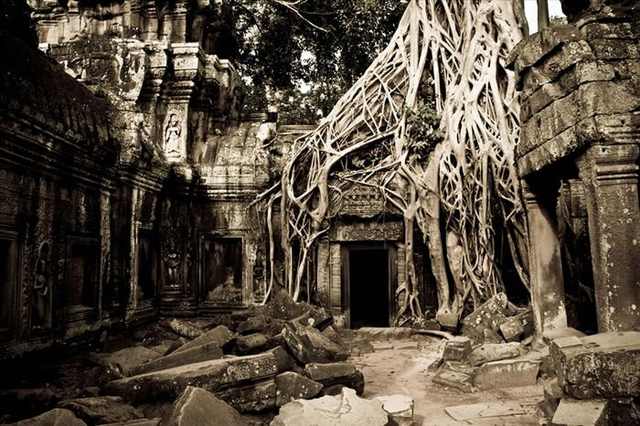 |
| In 2007, a group of researchers concluded the Angkor had been the largest preindustrial city in the world, with an elaborate infrastructure system that connected at least 1,000 square kilometers (390 square miles) to the temples at its center. It is estimated that the Angkor area may have supported up to one million people. |
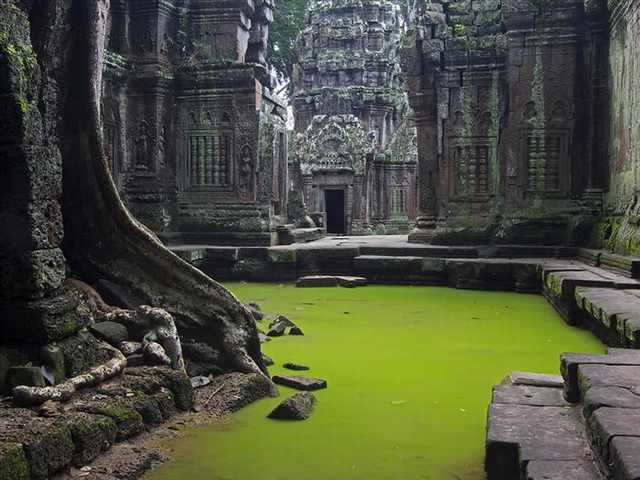 |
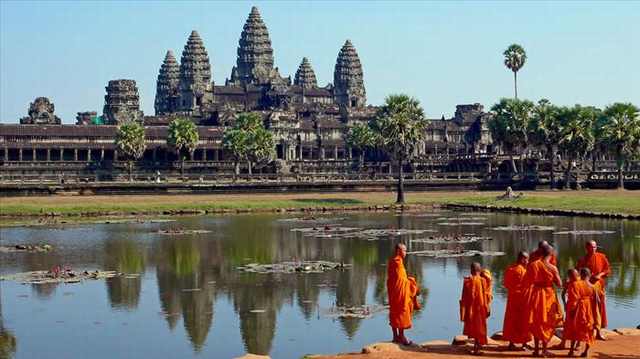 |
| Buddhist monks in front of the reflection pool at Angkor Wat, the site's best-known structure. Angkor Wat was built to represent the Hindu 'Mountain of the Gods' and served as a funerary temple. It was built between 1113 and 1150 by King Suryavarman II. |
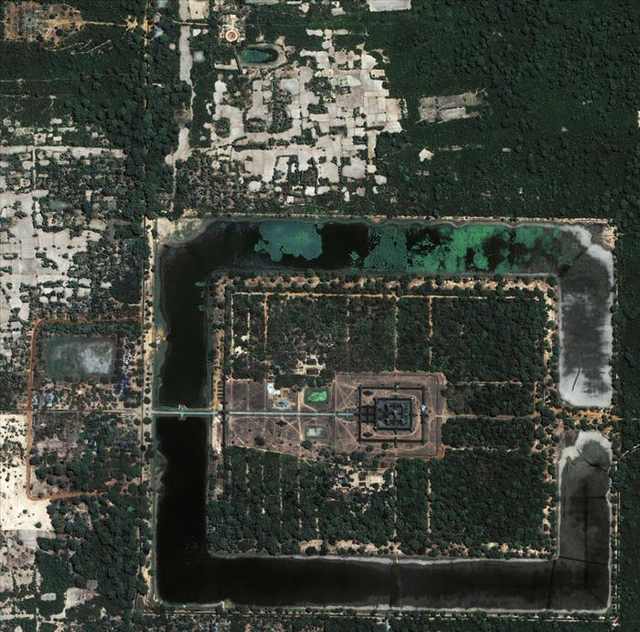 |
| An aerial view of Angkor Wat, the temple dedicated to the Hindu god Vishnu and built as a representation of Mount Meru, the home of the gods and the center of the Hindu universe. Donned with pyramid architecture, the temple is also covered with intricate reliefs of Hindu gods and epics. |
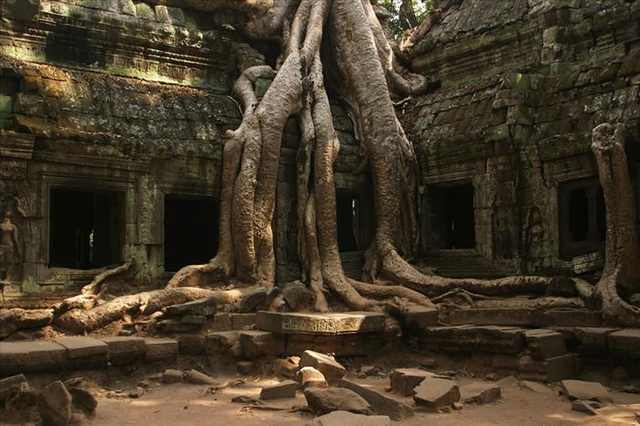 |
| The iconic tree at Ta Prohm. This temple was built during the time of Jayavarman VII and is best known as the temple whe-re trees have become intertwined and interwoven into the stone. |
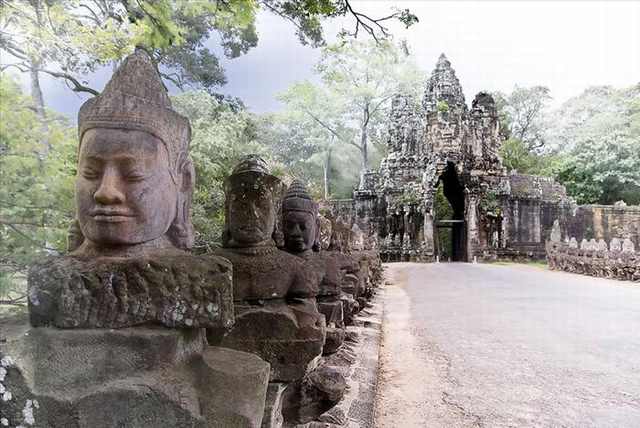 |
| Statues at the gateway to Angkor Thom, or 'The Great City'. These images represent the Hindu myth of creation, called the Churning of the Sea of Milk. On one side of the path, there are 54 guardian gods called devas and on the other side there are 54 images of demon gods called asuras. |
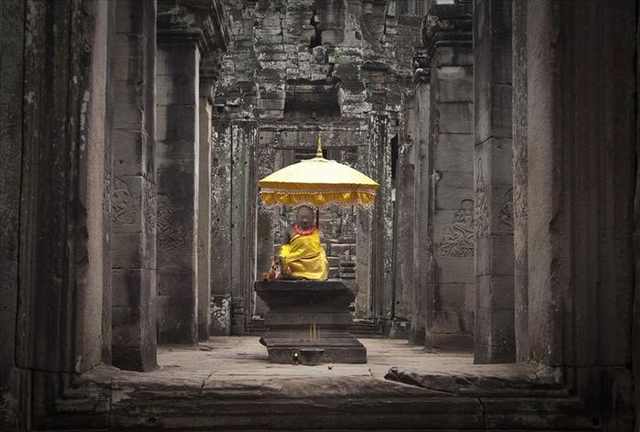 |
| A statue of a Buddhist monk. |
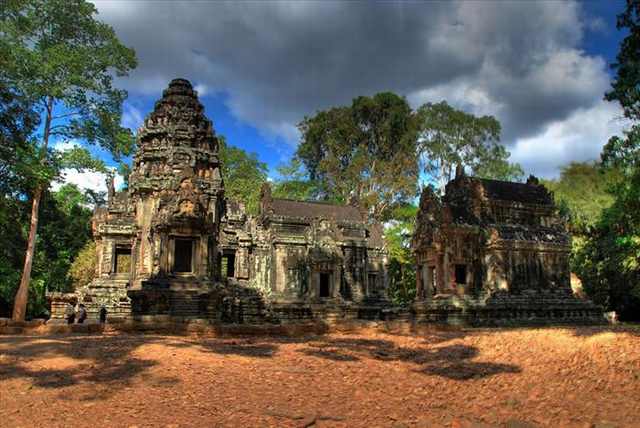 |
| Chau Say Tevoda, another temple, built in the style of Angkor Wat in the 12 century before the construction of Angkor Thom and the Victory Way. |
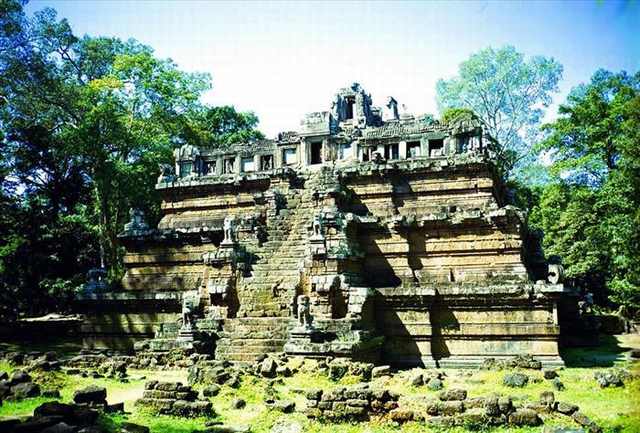 |
| Phimeanakas was built towards the end of the 10th century during the reign of Rajendravarman and later rebuilt by Suryavarman II in the shape of a three-tiered pyramid. According to legend, there was once a tower at the top of the temple. |
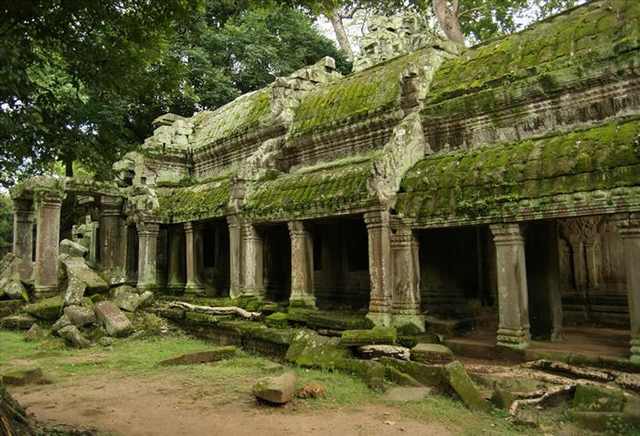 |
| Fine carving at the ruins of the Buddhist temple of Angkor Ta Prohm. The temple dates back to the 12-13th century and was built by the famous Jayavarman VII. |
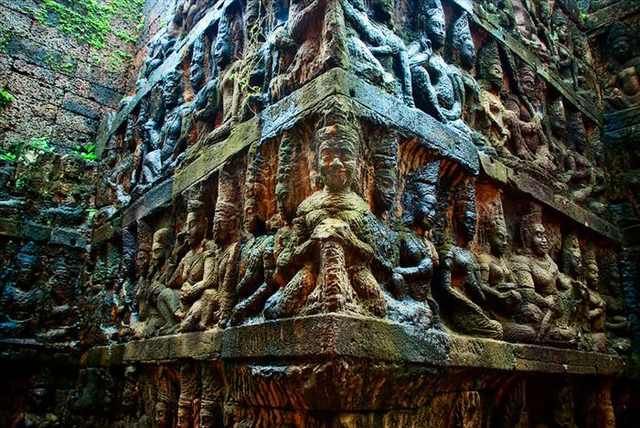 |
| Detailed reliefs of the underworld, part of the Royal Square between the temples. |
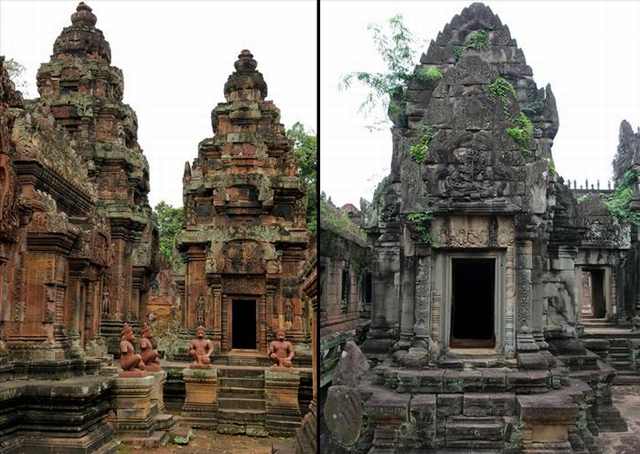 |
| Banteay Srei was a temple built in the 10th century that was dedicated to the Hindu god Shiva. It is the only major temple built at Angkor that was not built by a monarch, but rather a courtier is accredited with the construction. |
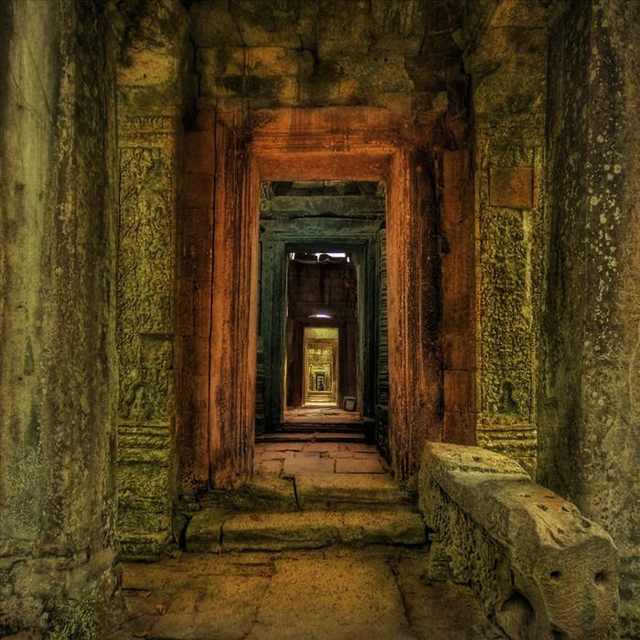 |
| A secret passageway in one of the side temples. |
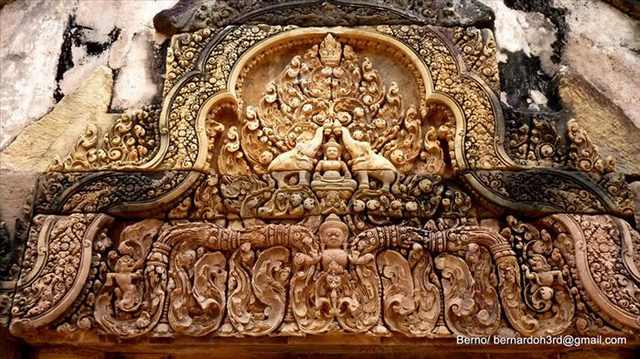 |
| The Banteay Srey temple dedicated to Shiva is so popular with tourists because it has been called 'the jewel of Khmer art', due to the untypically small size of the buildings. |
 |
| Pre Rup was originally built as the state temple of Khmer king Rajendravarman. It was dedicated in 961 or 962 and was built entirely of brick, laterite and sandstone. |
 |
| The famous empty doorway of Ta Prohm. |
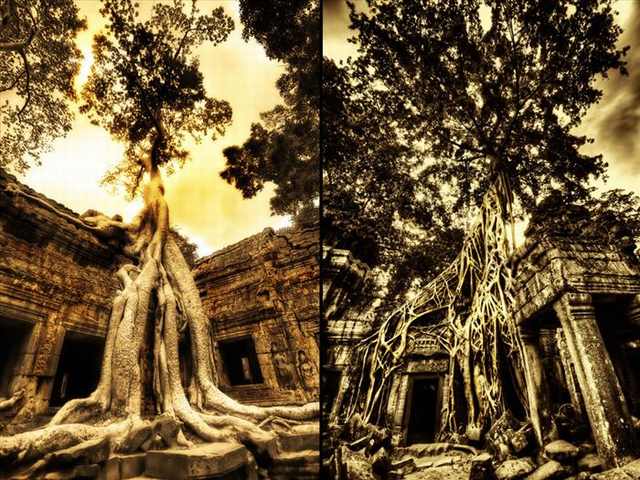 |
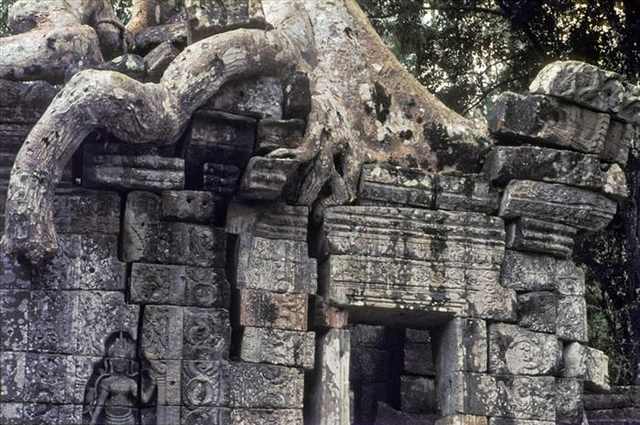 |
| A photo of Angkor Wat taken in 1965 whence time was already taking its toll. |
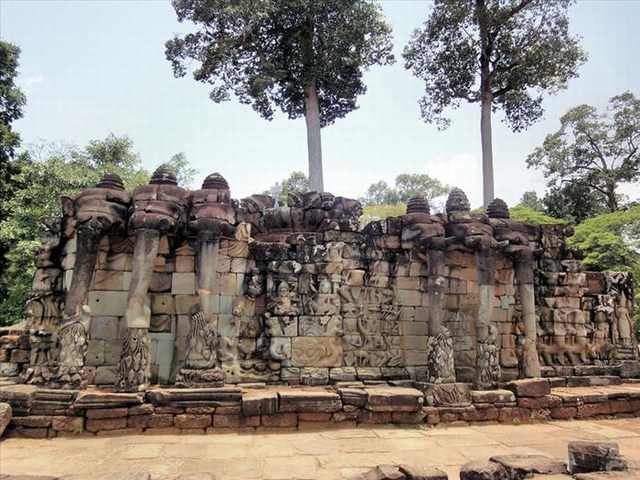 |
| The Angkor Thom terrace of the Elephants named for the 350 meter long (1,148 ft) carvings of elephants on its face. |
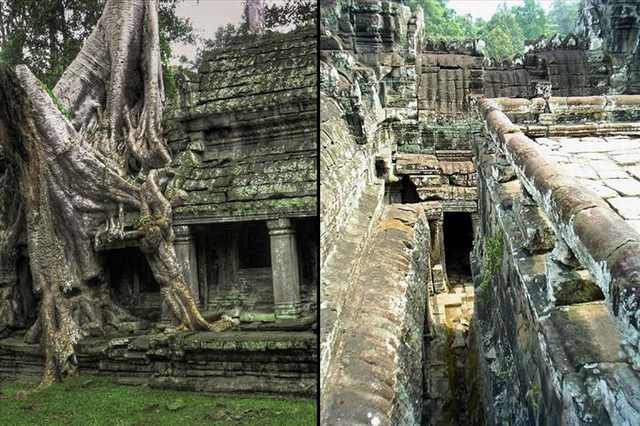 |
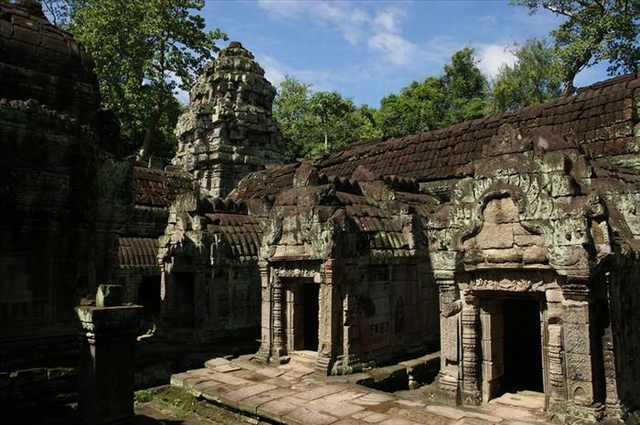 |
| Preah Kham temple ruins, built by king Jayavarman the VII in the late 12th century and dedicated to his father Dharanindravarman II. |
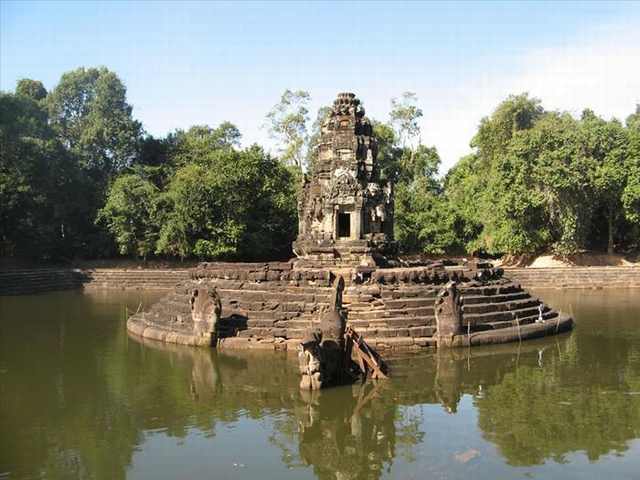 |
| Neak Pean Temple is an artificial island with a Buddhist temple at its center. There are snakes or Naga that cover the bottom of the temple structure. |
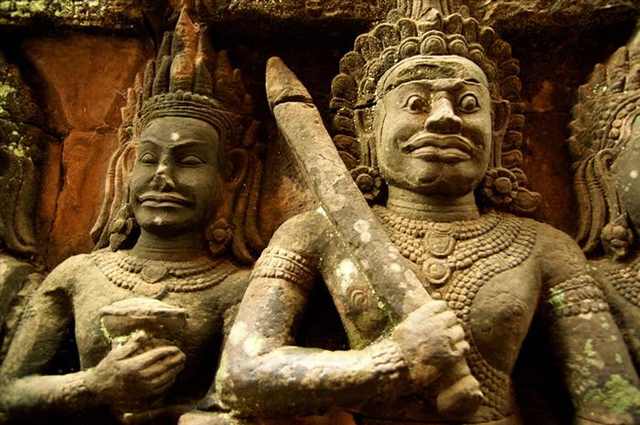 |
| Terrace view of the Leper King in Angkor Thom. |
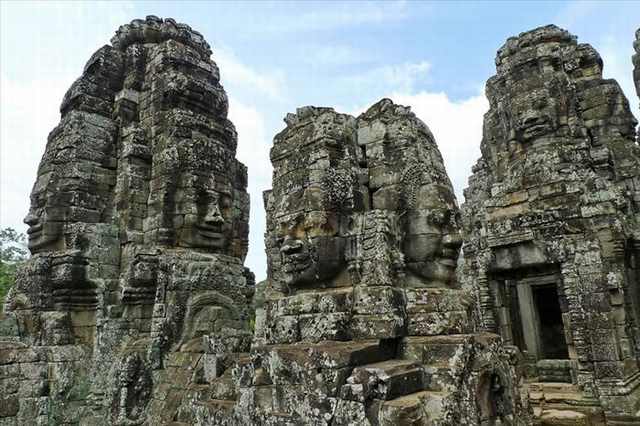 |
| The stone faces of Bayonne. |
 |
| Buddha covered and embraced by the roots of nature. |
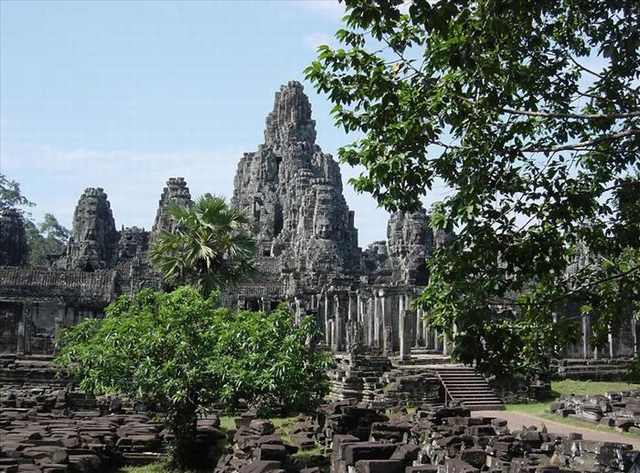 |
| Bayon Khmer Buddhist temple of the 13th century. |
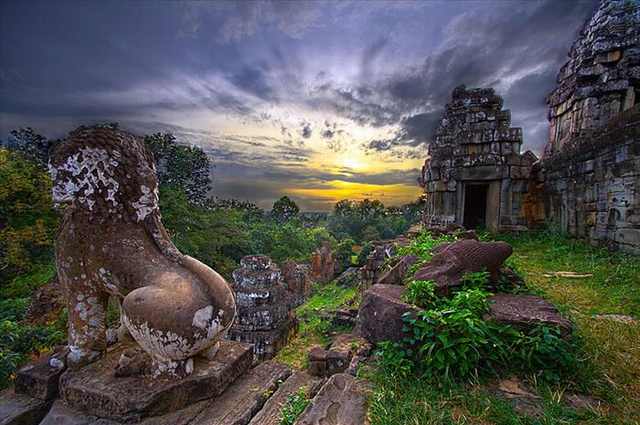 |
| Phnom Bakheng. |
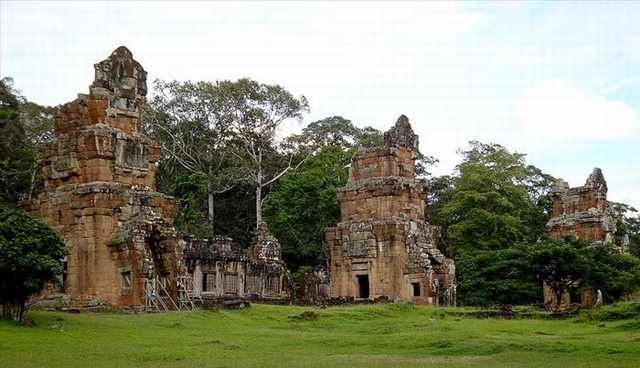 |
| Prasat Suor Prat is a series of 12 towers at Angkor Thom. |
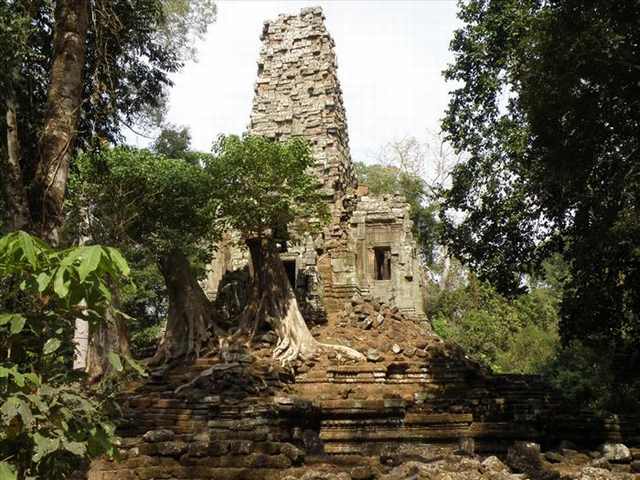 |
| Prasat Preah Palilay. New research suggests that this entrance to a grid of canals was built as a shortcut for the ancient construction workers when building the Angkor Wat temple. This possibly explains how the temple was built in a mere 20 years. |
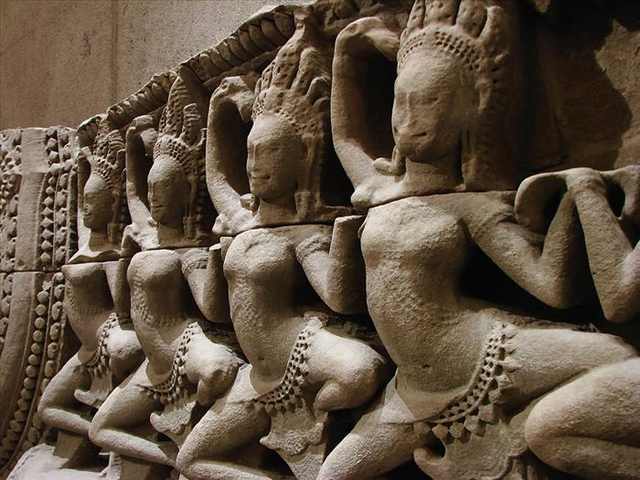 |
| Apsaras f-rom 12th-13th century sandstone. |
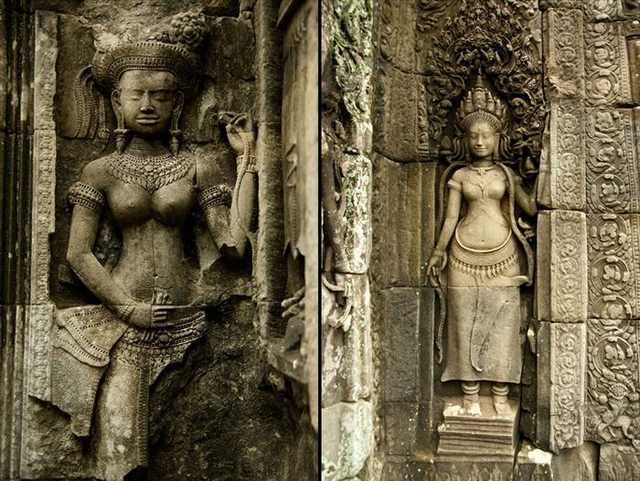 |
| Statues at the Bayon temple. |
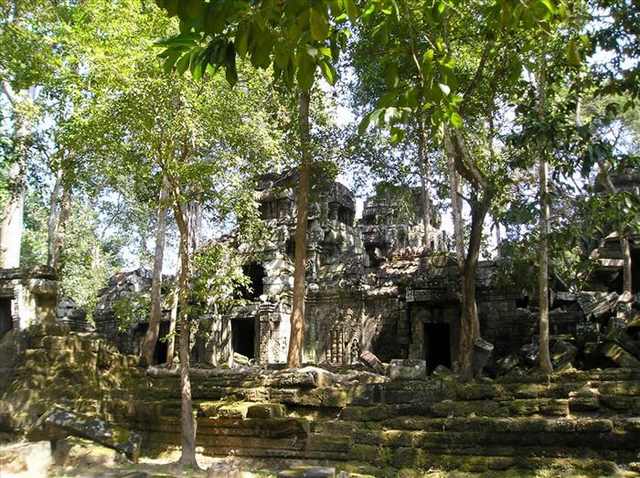 |
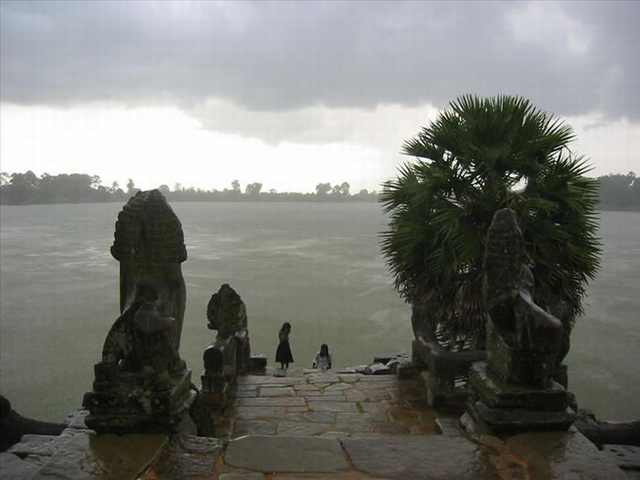 |
| Srah Srang reservoir that was built during the mid-10th century. There are steps that lead down to the water guarded by two lions. |
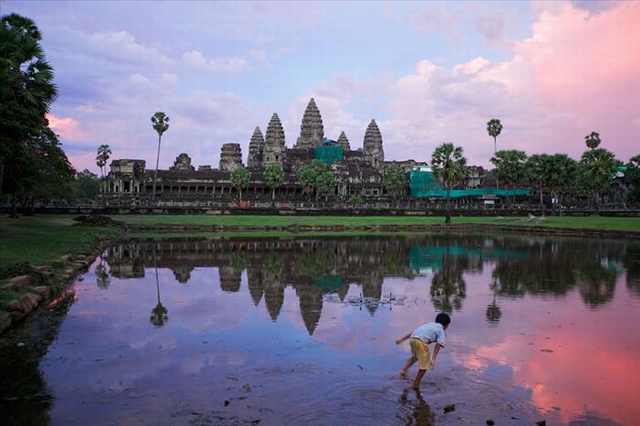 |
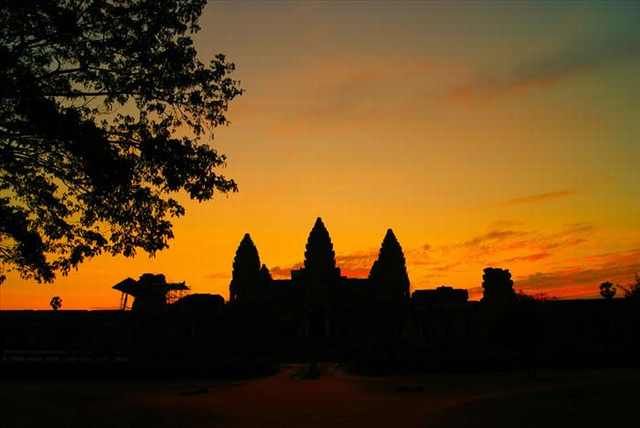 |
| Sunset at Angkor Wat. |
Tác giả bài viết: Thanh Nguyen
Những tin mới hơn
Những tin cũ hơn
 Một phụ nữ nghèo ở Nghệ An thầm lặng chôn cất nhiều hài nhi xấu số
Một phụ nữ nghèo ở Nghệ An thầm lặng chôn cất nhiều hài nhi xấu số
 Lẽ Đời .
Lẽ Đời .
 Công và quạ, con nào đẹp hơn?
Công và quạ, con nào đẹp hơn?
 Thành phố Mỹ có thể bị siêu động đất “hạt nhân” tách đôi.
Thành phố Mỹ có thể bị siêu động đất “hạt nhân” tách đôi.
 Mười nguyên tắc thọ thêm nhiều tuổi.
Mười nguyên tắc thọ thêm nhiều tuổi.
 Làm sao để hạnh phúc?
Làm sao để hạnh phúc?
 Little Saigon: 16 thủ khoa và á khoa Học Khu Garden Grove 2017 là gốc Việt
Little Saigon: 16 thủ khoa và á khoa Học Khu Garden Grove 2017 là gốc Việt
 10 lý do chịu đau khổ
10 lý do chịu đau khổ
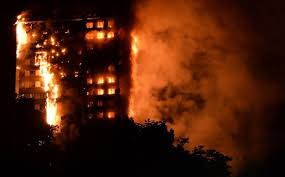 Người London dốc lòng cứu trợ cư dân trong vụ cháy chung cư
Người London dốc lòng cứu trợ cư dân trong vụ cháy chung cư
 Trump và hiệp ước Paris về môi trường.
Trump và hiệp ước Paris về môi trường.